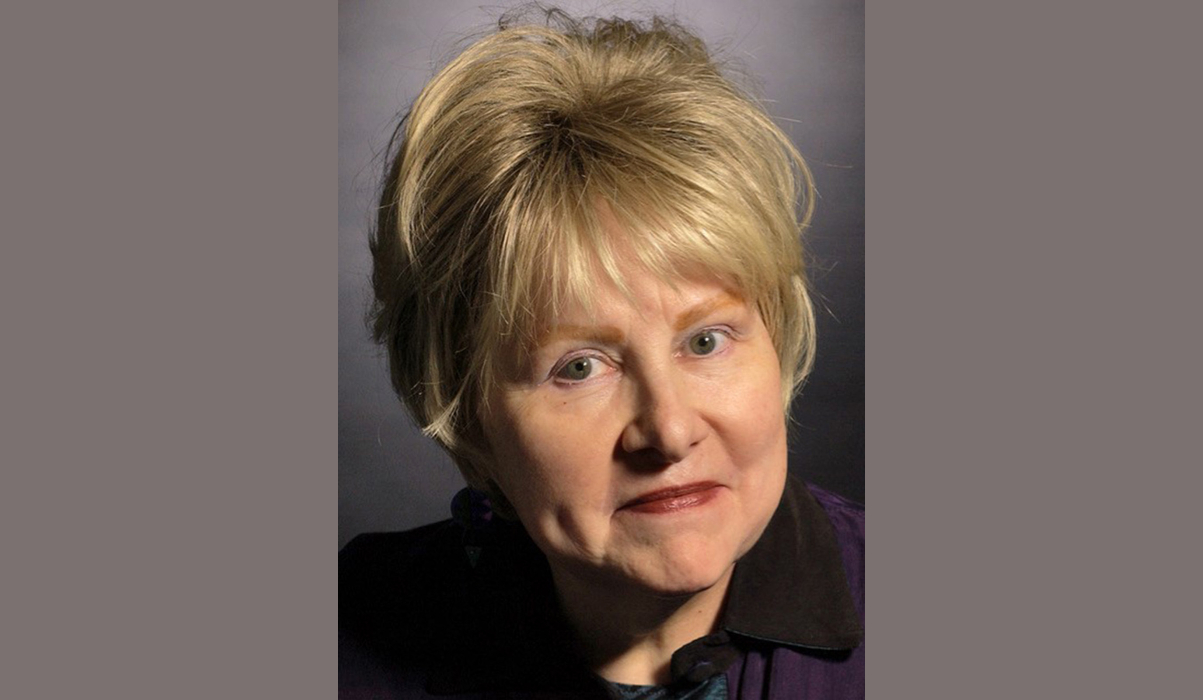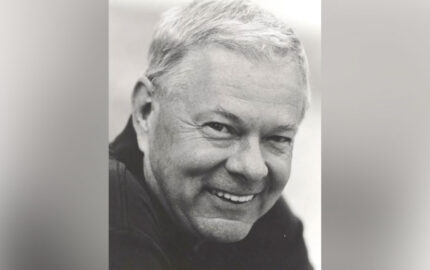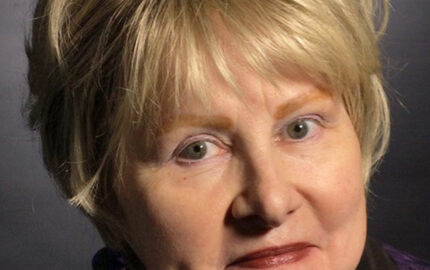When I arrived at the Milwaukee Journal Sentinel in the summer of 2000, Whitney Gould and I were part of a team that covered the biggest cultural story in our community at the time, an audacious art museum being built beside Lake Michigan. That project was not without its drama, as the architect, Santiago Calatrava, inspired ever-increasing costs and engineering challenges. I often called my mother with regular dispatches, and she cast the many vivid characters, including some in the newsroom, into a sort of fantasy film adaptation. When my mom suggested Vanessa Redgrave could play the role of Whitney, the paper’s intrepid architecture writer, I knew I had faithfully captured something of Whitney’s stature and elegance in those calls home.
Indeed, for years, architects, developers, and urban planners anticipated and braced themselves for the arrival of the paper on Mondays, when Whitney’s columns appeared prominently on the cover of the local section. She could deliver sharp critiques not only because of her expertise and well-reasoned arguments but because of the generosity and sense of fairness inherent to her journalism. Many of those professionals were literally schooled by Whitney over time and became increasingly design-minded, thanks to her tough-but-poetic cajoling.
Whitney, who was 76, an unapologetic devotee of modernism who lived in a colorful and impeccably restored Victorian home on Milwaukee’s East Side, died this month. She was the longtime urban landscape writer and architecture critic at the Journal Sentinel, where, after she left in 2007, I took over some of her role. She was also a 1974 Nieman Fellow and, after her retirement, a member of Milwaukee’s City Plan Commission.
As I look across Milwaukee’s urban landscape today, I can see Whitney’s influence everywhere, in the prominent projects she championed, like Calatrava’s wing for the Milwaukee Art Museum, or what was erected in the wake of her critiques, like Discovery World, a sleek science-and -technology center, the design for which was completely revamped in the wake of her initial review.
But I also see her influence in countless details that make a city more livable—the setbacks, the pocket parks, the mullions, the materials. For someone who was always on the lookout for visionary thinking in our civic leaders, for someone who loved to quote urban planner Daniel Burnham saying “Make no little plans; they have no magic to stir men’s blood,” Whitney also believed that great cities were made of small and even heroic acts of design excellence. She recently reminisced about her discovery of a petite and now long-gone sculpture garden beside an art gallery. It was a quiet gift, built by hand and without a lot of fanfare or funds. She was as likely to dedicate her column inches to the ambitions of such neighborhood projects as she was to write about big-budget, headline-grabbing plans.
Whitney was also the kind of colleague that every newsroom needs, and especially an example for other women. She believed journalists should challenge one another to do their best work, and never seemed to abide by the power dynamics in our newsroom if she had something to say, particularly about a point of fairness. She simply did not see titles in those moments, and sailed into editors’ offices to challenge their decisions with some frequency.
She didn’t shy away from controversy either. We broke a story in 2007 about the then new Grohmann Museum, which showcased artwork featuring the evolution of human labor. Three of the artists in the collection had ties to the Third Reich and one, Erich Mercker, had been commissioned directly by Adolf Hitler’s regime to create propaganda, images of Germany’s expanding infrastructure. We raised questions about the museum’s responsibility to contextualize such works, which it later did. The notion that the words “museum” and “Nazi” could end up in a headline together felt explosive and had me on edge, and our editors too. But not Whitney. We had our facts straight, she suggested, so why worry? In nearly 20 years of knowing her, I never knew her to be intimidated. She was a force.
In the last year, I spent more time with Whitney than I normally did. We made an unusual foray into activism together, advocating for the preservation of a work of landscape architecture by Dan Kiley that had been threatened with demolition. We penned a public letter, sending it to the mayor, various elected officials, and other civic influencers. We twisted a few arms and collaborated with other activists. We went to City Hall, where Whitney gave testimony about the need to preserve the rare, chapel-like space made of trees. She was as inspired and motivated as I’ve ever seen her.
I’ll never forget seeing Whitney helped into her seat on the day of the hearing by our rival in that debate, an architect whom Whitney had written about flatteringly and often in the past, an architect she respected as much as any other in our community. She had mobility issues, and he did too. In a busy and packed room, where no one was paying much attention, he struggled to his feet to help her to her chair, where she would deliver aloud a potentially reputation-altering critique of his plan to destroy the Kiley grove. That graceful, almost unseen moment took my breath away. In it was a whole history about Whitney’s legacy, about the kind of courage required to speak one’s mind in public, even against those we respect, and an unshakable civility that was contagious.
We lost our fight at City Hall, and the last time I saw Whitney we had one of our usual several-hours-long lunches at our usual spot. She was wearing new earrings, as she often did, and had her regular iced tea with extra ice. We had salads and shared a piece of cake. We talked about books and film and mutual friends. We gossiped about the paper, which I had left earlier in the year. Then, we got into the car and drove to the Kiley grove, where demolition was underway, to say goodbye to a public space we both treasured.
On that day, for whatever reason, I asked Whitney a perhaps impertinent personal question. Those who knew her understood that this was just not done. Whitney had a private side and disliked talking about herself. I asked her how she did it, how she seemed to never lose heart about anything, even in the face of cancer, which she had battled more than once. It was an inherited family trait, she told me. Life is finite, and she just didn’t see the point in wasting a moment of it.
Indeed, for years, architects, developers, and urban planners anticipated and braced themselves for the arrival of the paper on Mondays, when Whitney’s columns appeared prominently on the cover of the local section. She could deliver sharp critiques not only because of her expertise and well-reasoned arguments but because of the generosity and sense of fairness inherent to her journalism. Many of those professionals were literally schooled by Whitney over time and became increasingly design-minded, thanks to her tough-but-poetic cajoling.
Whitney, who was 76, an unapologetic devotee of modernism who lived in a colorful and impeccably restored Victorian home on Milwaukee’s East Side, died this month. She was the longtime urban landscape writer and architecture critic at the Journal Sentinel, where, after she left in 2007, I took over some of her role. She was also a 1974 Nieman Fellow and, after her retirement, a member of Milwaukee’s City Plan Commission.
As I look across Milwaukee’s urban landscape today, I can see Whitney’s influence everywhere, in the prominent projects she championed, like Calatrava’s wing for the Milwaukee Art Museum, or what was erected in the wake of her critiques, like Discovery World, a sleek science-and -technology center, the design for which was completely revamped in the wake of her initial review.
But I also see her influence in countless details that make a city more livable—the setbacks, the pocket parks, the mullions, the materials. For someone who was always on the lookout for visionary thinking in our civic leaders, for someone who loved to quote urban planner Daniel Burnham saying “Make no little plans; they have no magic to stir men’s blood,” Whitney also believed that great cities were made of small and even heroic acts of design excellence. She recently reminisced about her discovery of a petite and now long-gone sculpture garden beside an art gallery. It was a quiet gift, built by hand and without a lot of fanfare or funds. She was as likely to dedicate her column inches to the ambitions of such neighborhood projects as she was to write about big-budget, headline-grabbing plans.
Whitney was also the kind of colleague that every newsroom needs, and especially an example for other women. She believed journalists should challenge one another to do their best work, and never seemed to abide by the power dynamics in our newsroom if she had something to say, particularly about a point of fairness. She simply did not see titles in those moments, and sailed into editors’ offices to challenge their decisions with some frequency.
She didn’t shy away from controversy either. We broke a story in 2007 about the then new Grohmann Museum, which showcased artwork featuring the evolution of human labor. Three of the artists in the collection had ties to the Third Reich and one, Erich Mercker, had been commissioned directly by Adolf Hitler’s regime to create propaganda, images of Germany’s expanding infrastructure. We raised questions about the museum’s responsibility to contextualize such works, which it later did. The notion that the words “museum” and “Nazi” could end up in a headline together felt explosive and had me on edge, and our editors too. But not Whitney. We had our facts straight, she suggested, so why worry? In nearly 20 years of knowing her, I never knew her to be intimidated. She was a force.
In the last year, I spent more time with Whitney than I normally did. We made an unusual foray into activism together, advocating for the preservation of a work of landscape architecture by Dan Kiley that had been threatened with demolition. We penned a public letter, sending it to the mayor, various elected officials, and other civic influencers. We twisted a few arms and collaborated with other activists. We went to City Hall, where Whitney gave testimony about the need to preserve the rare, chapel-like space made of trees. She was as inspired and motivated as I’ve ever seen her.
I’ll never forget seeing Whitney helped into her seat on the day of the hearing by our rival in that debate, an architect whom Whitney had written about flatteringly and often in the past, an architect she respected as much as any other in our community. She had mobility issues, and he did too. In a busy and packed room, where no one was paying much attention, he struggled to his feet to help her to her chair, where she would deliver aloud a potentially reputation-altering critique of his plan to destroy the Kiley grove. That graceful, almost unseen moment took my breath away. In it was a whole history about Whitney’s legacy, about the kind of courage required to speak one’s mind in public, even against those we respect, and an unshakable civility that was contagious.
We lost our fight at City Hall, and the last time I saw Whitney we had one of our usual several-hours-long lunches at our usual spot. She was wearing new earrings, as she often did, and had her regular iced tea with extra ice. We had salads and shared a piece of cake. We talked about books and film and mutual friends. We gossiped about the paper, which I had left earlier in the year. Then, we got into the car and drove to the Kiley grove, where demolition was underway, to say goodbye to a public space we both treasured.
On that day, for whatever reason, I asked Whitney a perhaps impertinent personal question. Those who knew her understood that this was just not done. Whitney had a private side and disliked talking about herself. I asked her how she did it, how she seemed to never lose heart about anything, even in the face of cancer, which she had battled more than once. It was an inherited family trait, she told me. Life is finite, and she just didn’t see the point in wasting a moment of it.



